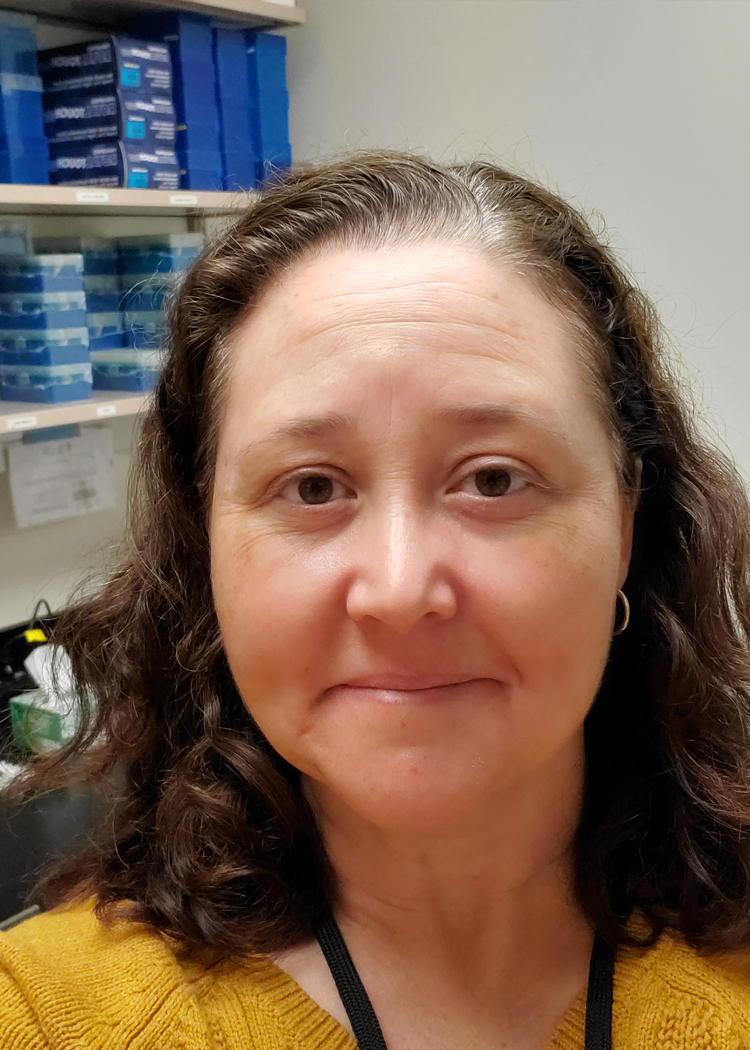CU Anschutz Su Lab
Understand mechanisms underlying aberrant placental function in severe fetal growth restriction.
CU Anschutz Su Lab
Understand mechanisms underlying aberrant placental function in severe fetal growth restriction.
Fetal growth restriction (FGR) secondary to placental insufficiency is a major cause of perinatal morbidity and mortality. Of even more concern are fetuses that suffer from early-onset, severe growth restriction. As detected by Doppler ultrasound, these pregnancies often exhibit grave impairments in fetoplacental blood flow, leading to a high risk for stillbirth/neonatal death and neurodevelopmental delay and long-term health consequences in those infants that survive. Currently, no preventative or therapeutic measures for severe FGR exist other than delivery, and clinical data are clear that this intervention does not impact overall survival or long-term outcome.
The CU Anschutz Su Lab’s primary research focus is to better understand the molecular mechanisms underlying abnormal placental blood flow and function. One common finding in placentas from pregnancies complicated by severe FGR is maldevelopment of the placental vascular tree as a consequence of impaired angiogenesis. We are investigating cellular and molecular derangements from human placental endothelial cells isolated from pregnancies complicated by severe FGR that underlie compromised endothelial cell migration. More recently, we have begun to study the role of the placental microenvironment, with focus on the placental villous stroma and on placental endothelial cell-extracellular matrix interactions. The ultimate goal of our research is to understand mechanisms underlying aberrant placental function in severe FGR that will lead to prevention strategies and treatment modalities.
American College of Obstetricians and Gynecologists District VIII Mentor of the Year Award (2019, EJS)
Best Graduate Poster award at Department of Reproductive Sciences Research Retreat (2019, DLG)
International Federation of Placenta Associations Early Career Research Award (2016, EJS)
Society for Reproductive Investigation President’s Achievement Award ( 2015, EJS)
Scientific Program Director; Society for Reproductive Investigation 2015 Annual Meeting (2015, EJS)
NIH Young Investigator Awardee to the Perinatal Research Society (2008, EJS)
The Harry Garber, M.D., Distinguished Alumnus Award, University of Illinois at Chicago College of Medicine (2000, EJS)
Alpha Omega Alpha Honor Medical Society, University of Illinois at Chicago College of Medicine (2000, EJS)
Society for Reproductive Investigation President’s Presenter’s Award (2021, DLG)
Severe, early-onset fetal growth restriction:
Our lab has primarily been interested in understanding mechanisms underlying severe, early-onset fetal growth restriction (sFGR) as these are the fetuses at highest risk for adverse perinatal outcome, including stillbirth, neonatal death, and neurodevelopmental delay with long-term health consequences in those that survive. These placentas exhibit maldevelopment of the villous vasculature secondary to impaired angiogenesis.
Our lab has developed a methodology to isolate human fetoplacental endothelial cells (ECs) from pregnancies with (1) sFGR, (2) Gestational age-matched, appropriately grown preterm controls, and (3) Appropriately grown term controls from uncomplicated pregnancies.
Our very early studies found that of the estrogen receptors, only estrogen receptor-b (ESR2) is expressed within these human fetoplacental ECs. Furthermore, ESR2 expression is higher in fetoplacental ECs in sFGR placentas. This high ESR2 expression regulates genes within the prostanoid biosynthetic cascade, leading to a shift toward production of vasoconstrictive vascular prostanoids.
Beyond aberrant vasomotor tone within the fetoplacental vasculature in sFGR, these placentas also exhibit maldevelopment of villous vessels, resulting in absent or reversed umbilical artery end-diastolic velocities on sonographic imaging. This abnormal Doppler velocimetry is indicative of pregnancies at high risk for adverse perinatal and long-term outcomes. We have found that aryl hydrocarbon receptor nuclear translocator (ARNT; otherwise known as hypoxia-inducible factor 1-b; [HIF1b]) is expressed in lower quantities both in vivo and in vitro within ECs of severely growth-restricted fetuses. In turn, this results in downregulation of vascular endothelial growth factor A (VEGFA) expression, leading to impaired angiogenesis. Unfortunately, neither administration of exogenous VEGFA or rescue of ARNT expression in growth-restricted ECs completely rescues the migrational defects seen at baseline in severe growth restriction, confirming that fetoplacental EC migration and angiogenesis are complex and require further interrogation.
Most recently, we have pioneered a method where we isolate human placental stromal fibroblasts from the same three pregnancy cohorts, and we leverage these fibroblasts to generate placental-specific matrices. Endothelial cells from the three cohorts are then subjected to matrices derived from each of the cohorts in order to delineate individual and synergistic EC-extracellular matrix (ECM) contributions on angiogenesis. We have found that although there are inherent EC defects in severe, early-onset FGR, this is further compounded by the matrix, whereby sFGR matrix results in impaired control EC migration and control matrix partially rescues sFGR EC migratory properties.
Fetal growth restriction and bronchopulmonary dysplasia:
Because there is a strong association between fetal growth restriction and bronchopulmonary dysplasia (BPD), a condition that results in inflammation and scarring of the lungs in newborns that can lead to long-term consequences including chronic lung disease and pulmonary hypertension, I have also been collaborating in studies designed to better understand determinants and mechanisms underlying BPD. We have found that low birth weight for gestational age is an important predictor of pulmonary hypertension in premature infants with moderate-to-severe BPD. Furthermore, cord blood biomarkers may also help to contribute to risk assessment for BPD and pulmonary hypertension, and just as importantly, that intrauterine regulation of angiogenesis is an important mechanism underlying fetal and postnatal growth.
Current Openings in the Su Lab:
Post-Doctoral Fellow
We are searching for a qualified post-doctoral fellow to join our growing laboratory, whose principal investigator is an NIH-funded physician-scientist. This individual will conduct research focused on biochemical, cellular, and molecular mechanisms underlying human placental angiogenesis and development, with a primary focus on severe, early-onset fetal growth restriction. Successful applicants will need to demonstrate a strong work ethic, to have the ability to work both independently and collaboratively, to exhibit excellent skills in scientific writing, and to display meticulous, detail-oriented technical skills and record-keeping.



